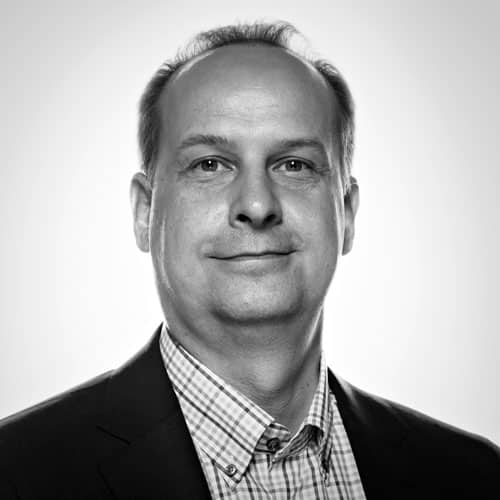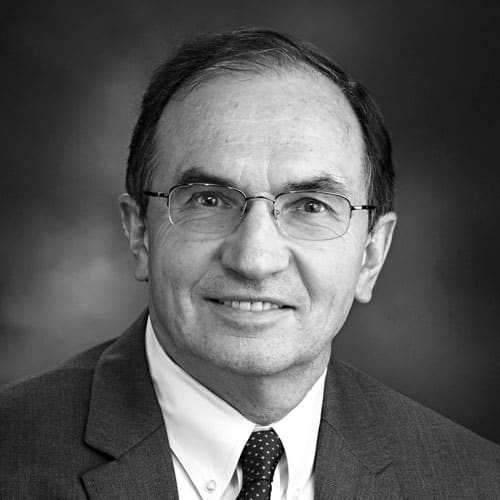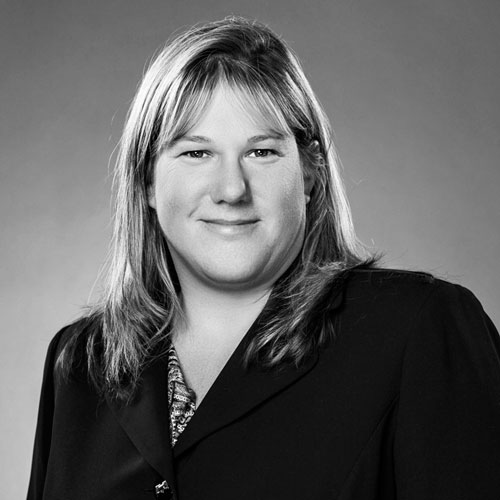A challenge in the cargo-handling industry is the need to keep up with the growing ship sizes in the market and accommodating them with bigger and higher cranes—a problem that not even an industry forerunner like Kalmar USA is exempt from facing. Dealing with this challenge has fallen on the shoulders of Mikko Vuojolainen, Kalmar’s vice president of crane upgrades. Although it seems counterintuitive, he has been able to achieve success throughout his career, in part, because of his personal principle: thinking regionally to function globally.

Kalmar, a cargo handling equipment and solutions company, has more than 5,200 employees in thirty different countries, and has its hand in one of four container moves that occurs around the world. Operating efficiently on a global scale is no easy task, even for a seasoned professional with twenty-four years of industry experience at Kalmar. In fact, it’s daunting. “It’s a totally different ball game,” Vuojolainen says. “It requires you to think differently.”
For Vuojolainen, that means implementing a strategy focused on regionally specific solutions to its customers’ cargo handling needs. “You have to address different customer needs in different areas,” Vuojolainen says. “As an example, crane upgrades and other services provided in Asian countries are handled differently than are those in Latin American countries. There is hardly one universal solution; although surface problems have lots of similarities.”
This tailor-made strategy is evident throughout every stage of Kalmar’s evolution, beginning with production. For example, years ago, Vuojolainen’s team established a production unit and later a joint venture company in China with the specific purpose of manufacturing equipment to best fit with Asian regional customer needs. “We married our reliable but technically advanced design with the local customer needs and Chinese production costs,” he says.
By doing so, Vuojolainen hopes to more confidently ensure that the cranes are being upgraded to the specifications set by the width of the ships entering each terminal, as well as ensuring that the horizontal transportation is appropriate for the specific size of the shipping site’s stacking yard. But it doesn’t stop there.
Due to the nuanced nature of the business, upgrading cranes includes more than just making accommodations to serve particular ship sizes; namely extension of crane lifetime and making them more environmentally friendly. “These ports normally operate close to a city, and what is happening is that the city is acting as a landlord on the other side of a lease agreement,” Vuojolainen says. “They are putting some restrictions in there that dictates what you can and can’t do while operating the terminal.”
Recently, Kalmar has upgraded numerous yard-stacking cranes’ engines, from diesel power to shore power where necessary to meet city-mandated restrictions on exhaust emissions and engine noise regulations. These moves exemplify how Kalmar responds to its customers’ special set of needs, according to Vuojolainen.
Strategic thinking has been present throughout Vuojolainen’s career, and his track record indicates his proven success. Prior to assuming his current role, Vuojolainen served Kalmar in a business-development role in which he implemented the same strategy of regionally specific solutions, albeit through different means.
Container terminals face the industry-wide challenge to transform from using manually operated equipment to fully automated container handling systems. Seamless deployment of automated equipment, terminal operating systems (TOS), and services is the most important success factor. Vuojolainen played a pivotal role in implementing the strategic initiative through Kalmar’s acquisition of a California-based software company specializing in TOS software.
Now Kalmar offers OneTerminal solution, a complete turnkey package for automated systems, which still can be tailored for customers’ locally preferred equipment types and other needs. “Automated solutions require lots of tailoring for successful local implementation,” Vuojolainen says.
If the past is any indicator of what may happen next, there is no telling what new challenges may arise for Kalmar and the cargo-handling industry. Yet, Vuojolainen believes his principle to be valid in the future of his career. “We are working in a close partnership with our customers in order to understand how their needs are changing today,” he says. “And how they will change in the future.”















